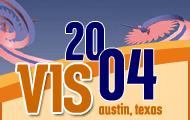 |
| VIS SESSIONS | ||||
| |
Keynote Speaker Wednesday, October 13:
"The Human Visual System: How Is Its Design Related to the Physics of the Natural Environment?" Abstract The human visual system is the result of evolution by natural selection and hence its design must incorporate detailed knowledge of the physical properties of the natural environment. This is an obvious statement, but the scientific community has been slow to take it seriously. Only recently has there been an increased effort to directly measure the statistical properties of natural scenes and compare them to the design and performance of the human visual system. I will describe some recent studies of the chromatic and geometrical properties of natural materials and natural images, as well as some perceptual and physiological studies designed to test how those physical properties are related to human perceptual mechanisms. Bio
Wilson S. Geisler earned a BA in psychology from Stanford University
in 1971 and a PhD in psychology from Indiana University in 1975. He
joined the faculty of the psychology department at the University of
Texas at Austin in 1975, where he is currently the director of the
|
|||